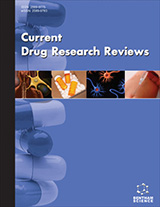
Abstract
Background: Recently, a combination prescription with the main ingredients sitagliptin and dapagliflozin as dipeptidyl peptidase-4 andsodium–glucose cotransporter-2 inhibitors, respectively, for the treatment of type 2 diabetes has widely been issued in hospitals. However, the development of double-layered tablets requires simultaneous quantitative dissolution tests that are significantly efficient and cost-effective.
Objective: Individual analysis of the two active pharmaceutical ingredients (APIs) incurs more than twice the time and cost. Consequently, this study aimed to develop a dissolution analysis method that simultaneously quantifies the APIs dapagliflozin and sitagliptin in multi- layered tablets. This simultaneous quantitative dissolution analysis can dramatically reduce analysis time and cost.
Methods: For reversed-phase high-performance liquid chromatography (RP-HPLC) analysis using ultraviolet detection, a Zorbax C18 column (4.6 × 150 mm, 5 μm) was used, and the flow rate was 1.5 mL/min, injection amount 20 μL, and maximum absorption wavelength set to 205 nm. Additionally, the analysis time was set to 1.5 times the retention time of dapagliflozin.
Results: The retention times of dapagliflozin and sitagliptin were 11.57 and 2.56 min, respectively. Further, their relative standard deviations were 0.11% and 0.05%, respectively. Quantitative analysis using RP-HPLC confirmed no peak interference between the APIs and excipients. Both APIs exhibited linearity at a 20–120% concentration.
Conclusion: The dissolution method developed in this study can quantify both APIs simultaneously, thereby reducing analysis time and cost by more than 50% and increasing efficiency in the pharmaceutical industry.
Graphical Abstract
[http://dx.doi.org/10.1016/j.ssmmh.2023.100190]
[http://dx.doi.org/10.1038/s41467-023-36946-7] [PMID: 36918550]
[http://dx.doi.org/10.1016/j.apjon.2022.100172] [PMID: 36632446]
[http://dx.doi.org/10.7475/kjan.2022.34.1.39]
[PMID: 28539866]
[http://dx.doi.org/10.1007/s00125-017-4336-x] [PMID: 28770321]
[http://dx.doi.org/10.1016/S0140-6736(98)07037-8] [PMID: 9742977]
[http://dx.doi.org/10.1016/S0140-6736(06)69703-1] [PMID: 17098087]
[http://dx.doi.org/10.2165/11209910-000000000-00000] [PMID: 23170914]
[http://dx.doi.org/10.1371/journal.pone.0158810] [PMID: 27391020]
[http://dx.doi.org/10.25258/ijpqa.11.3.9]
[http://dx.doi.org/10.22159/ijpps.2019v11i8.34339]
[http://dx.doi.org/10.1111/dom.12685] [PMID: 27160961]
[http://dx.doi.org/10.4093/jkd.2013.14.4.206]
[http://dx.doi.org/10.1016/j.metabol.2012.09.004] [PMID: 23062489]
[http://dx.doi.org/10.1111/j.1463-1326.2008.01016.x] [PMID: 19125778]
[http://dx.doi.org/10.2147/JMDH.S64084] [PMID: 25061317]
[http://dx.doi.org/10.1002/dmrr.2818] [PMID: 27155214]
[http://dx.doi.org/10.1111/dom.13294] [PMID: 29573110]
[http://dx.doi.org/10.1186/s40064-016-2241-2] [PMID: 27330891]
[http://dx.doi.org/10.1007/s00769-006-0095-y]
[http://dx.doi.org/10.22159/ijap.2018v10i6.28279]
[http://dx.doi.org/10.1186/s12967-020-02672-7] [PMID: 33407568]
[http://dx.doi.org/10.1016/j.jpba.2010.05.022] [PMID: 20646890]
[http://dx.doi.org/10.1016/j.jpba.2017.05.006] [PMID: 28579052]
[http://dx.doi.org/10.1016/j.jchromb.2008.09.030] [PMID: 18929516]
[http://dx.doi.org/10.4236/ajac.2015.611080]
[http://dx.doi.org/10.1016/j.jpba.2005.02.009] [PMID: 15967293]
[http://dx.doi.org/10.5740/jaoacint.17-0363] [PMID: 29566782]
[http://dx.doi.org/10.1016/j.matpr.2021.04.444]
[http://dx.doi.org/10.1002/bmc.4641] [PMID: 31265736]
[http://dx.doi.org/10.1016/j.trac.2007.01.009]
[http://dx.doi.org/10.1080/10826070601084753]
[PMID: 25452691]
[http://dx.doi.org/10.1016/j.jpba.2005.03.036] [PMID: 15935601]
[http://dx.doi.org/10.1007/s11306-018-1367-3] [PMID: 29805336]
[http://dx.doi.org/10.1016/j.foodchem.2016.10.005] [PMID: 27855918]
[http://dx.doi.org/10.1007/s11095-007-9291-7] [PMID: 17458684]
[http://dx.doi.org/10.1016/j.jchromb.2008.12.056] [PMID: 19157996]
[http://dx.doi.org/10.1016/j.jchromb.2009.01.003] [PMID: 19179125]
























